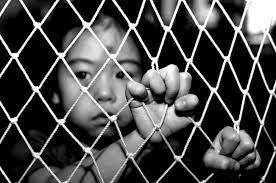Patent No. 6549805 Torsion diagnostic system utilizing noninvasive biofeedback signals between the operator, the patient and the central processing and telemetry unit
Patent No. 6549805
Torsion diagnostic system utilizing noninvasive biofeedback signals between the operator, the patient and the central processing and telemetry unit (Nesterov, et al., Apr 15, 2003)
Abstract
A biofeedback diagnostic system includes a triggering sensor and a central processing and telemetry unit having a block for producing a series of various type stimuli to a patient and an operator of the system. Two biofeedback loops are formed: central unit-patient-triggering sensor, and central unit-patient-operator. The triggering sensor remotely acquires the patient's brainwaves feedback to the stimuli and sends a digital signal back to the central unit. To improve the patient's intuitive response, an optoelectronic element is placed of the patient's forehead and illuminated with a laser light at a frequency of the patient's brainwaves theta-rhythm. To isolate the torsion component of the laser light, a cavity resonator is employed with a volumetric chamber having a size being some multiple of the transmission frequency of about 1.45 GHz.
Notes:
SUMMARY
OF THE INVENTION
Accordingly, it is an object of the present invention to overcome these and
other drawbacks of the prior art by providing a novel non-invasive diagnostic
system using a central processing and telemetry device and an operator to interpret
the biofeedback signal from the patient.
It is another object of the present invention to provide a diagnostic system
capable of processing the biofeedback from both the patient and the operator.
It is a further object of the present invention to provide a diagnostic system
in which the biofeedback from the patient is collected non-invasively.
It is yet a further object of the present invention to provide a diagnostic
system in which a device is provided to enhance the intuition of the patient
to facilitate the formation of the biofeedback signal from to the patient to
the apparatus.
The diagnostic system of the invention includes a central processing and telemetry
(CPT) device capable of providing a predetermined series of stimuli to both
the operator and the patient. Such stimuli can be chosen of various types depending
on the purpose of evaluation. They can be of optical (such as a screen of a
monitor, a series of light diodes, etc.), sound (via headsets or speakers),
or magnetic nature. A triggering sensor facilitates the biofeedback formation
and transmittal from the patient to the CPT device via an analog-to-digital
converter. Another biofeedback loop is formed in parallel between the operator
and the patient. It is therefore the operator who is actively participating
in the evaluation and interprets its results. To further increase the ability
of the patient to intuitively cause the triggering sensor to send the feedback
signal, a device called "cadistor" provides an intuition enhancement. This devise
subjects the patient to a series of small level energy bursts with the frequency
preferably coinciding with the theta rhythm of the patient's brainwaves.




Comments